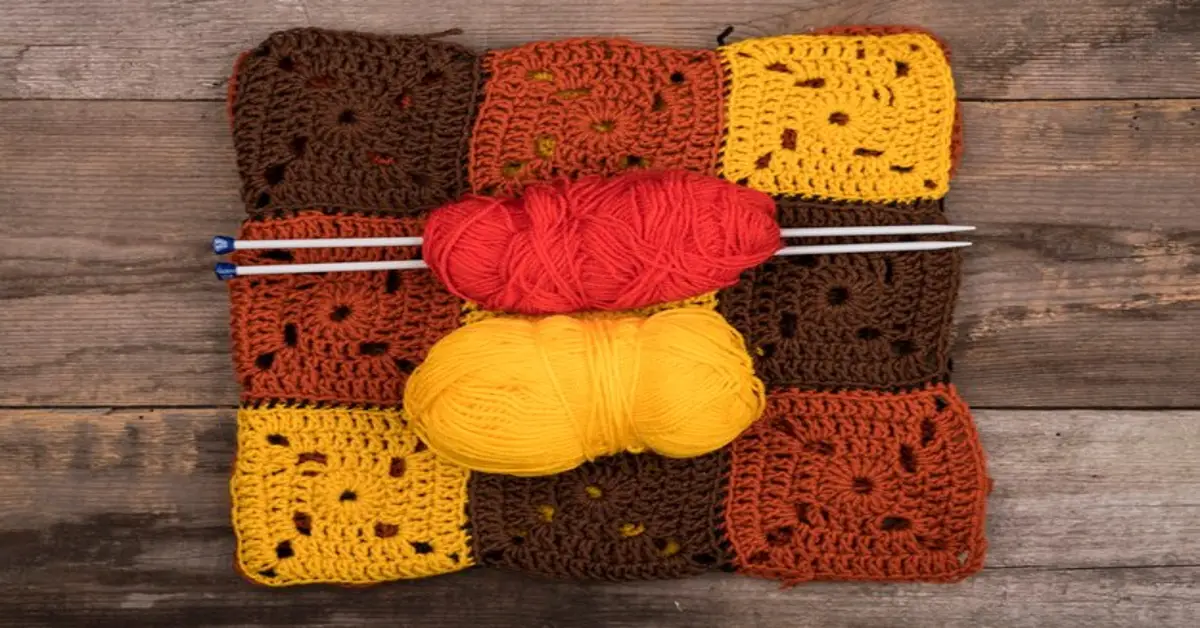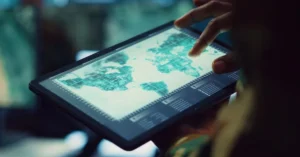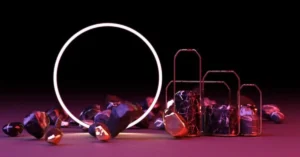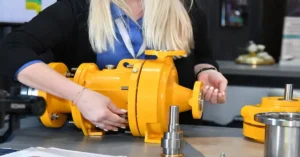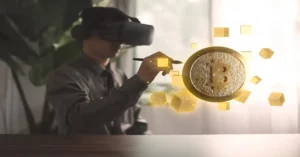If you’ve ever admired a cozy blanket or vibrant throw adorned with delightful squares, then you’ve likely encountered the charm of granny square patterns. These colorful motifs are not just for grandmas; they’re an essential part of crochet culture that appeals to crafters of all ages. Whether you’re a complete beginner or someone looking to sharpen your skills, diving into the world of granny squares is both rewarding and fun.
Granny squares offer endless possibilities for creativity. With just a few basic stitches, you can create beautiful designs that add warmth and personality to your home. The best part? Once you’ve mastered the basics, you’ll find plenty of intricate patterns waiting for you in this beloved craft.
So grab your yarn and hook! Let’s explore everything from getting started with granny square patterns to tips on perfecting your technique. You’re about to embark on an exciting crochet journey filled with color, texture, and loads of inspiration!
Getting Started
Starting your journey with granny square patterns is easier than you might think. The first step is to familiarize yourself with the basic crochet stitches. You’ll primarily use chains, slip stitches, double crochets, and sometimes single crochets. These stitches form the foundation of any granny square pattern.
Next, choose a yarn that speaks to you! Worsted weight yarn is often recommended for beginners due to its versatility and ease of handling. Don’t forget about colors—granny squares are known for their vibrant palettes. Selecting contrasting or complementary hues can make your projects pop.
You’ll also need a crochet hook that suits your chosen yarn. A size H (5 mm) hook works well with worsted weight yarn, but always check the label on your yarn for recommendations. Having stitch markers handy can be helpful too; they assist in keeping track of rounds as you work through each square.
Once you’ve gathered your supplies, it’s time to learn how to create a magic circle, which will give you a solid starting point for most granny squares. This technique eliminates gaps in the center while allowing flexibility in sizing.
Practice makes perfect! Don’t rush through these initial steps; take your time getting comfortable with each stitch before moving on to more complex patterns or designs.
Essential Supplies
To start your journey with granny square patterns, gathering the right supplies is essential. First on the list is yarn. Choose a medium-weight yarn for ease of use and versatility. Cotton yarn offers durability and vibrant colors, while acrylic provides warmth and affordability.
Next, you’ll need crochet hooks. A size H-8 (5mm) hook works well for most worsted weight yarns. However, always check your yarn label for recommended hook sizes to ensure a perfect tension in your stitches.
Scissors are another must-have tool. Invest in a good pair that can easily snip through various types of yarn without fraying them at the ends. Having a reliable pair will save you time during those crafting sessions.
Don’t forget about a tapestry needle! This handy tool helps weave in loose ends after finishing each square, giving your projects that polished look we all strive for when working on our granny squares.
Consider keeping stitch markers nearby to help track rounds or specific stitches within your pattern. They’re especially useful when creating larger projects where it’s easy to lose count or get mixed up with multiple rows of color changes.
Basic Granny Square Patterns
Granny granny square patterns are the foundation of many crochet projects. They’re simple, yet versatile. Understanding basic granny square patterns can open a world of creativity. The classic granny square is made up of just a few stitches: chain, double crochet, and slip stitch.
To begin with the traditional pattern, start by creating a slip knot and chaining four to form a ring. You’ll then work your way around this ring with clusters of double crochets separated by chains. This creates that iconic “flower” center within your square.
Once you’ve mastered the basics, try adding color changes for visual interest. Alternate yarn shades as you go round to create vibrant gradients or bold contrasts between rounds—this adds depth and personality to your squares.
Another popular variation is the solid granny square pattern. Instead of leaving spaces between clusters, fill them in completely for a denser look. Solid squares are perfect when you’re looking for warmth in blankets or sturdy textiles like bags.
Don’t be afraid to explore other designs inspired by traditional motifs! There’s an entire universe out there—from hexagons to triangles—waiting to add flair to your crochet repertoire while keeping it fun and engaging.
Advanced Granny Square Patterns
Once you’ve mastered the basics of granny squares, it’s time to explore advanced patterns that can elevate your crochet game. These intricate designs often incorporate various stitches and techniques, allowing for a rich tapestry of textures and colors.
One popular method is combining multiple squares into one cohesive piece. This not only adds visual interest but also challenges your skills as you learn to join different styles seamlessly. Consider experimenting with motifs like flowers or stars that can be incorporated into larger projects.
Another approach is using color gradients within a single square. By changing yarn colors gradually, you’ll create stunning ombre effects that catch the eye. This technique requires careful planning but results in breathtaking pieces perfect for any project.
Incorporating additional stitches such as bobbles, shells, or popcorns introduces complexity to your work. These textured elements bring depth and dimension to your granny squares, making them stand out even more in a blanket or garment.
Don’t shy away from exploring modern interpretations of granny squares! With innovative designs emerging regularly on platforms like Instagram and Pinterest, there are endless possibilities waiting for you to try them out. Your creativity will truly shine when working with these advanced patterns.
Tips for Perfecting Your Granny Squares
To perfect your granny squares, focus on tension. Maintaining consistent tension is key to achieving a uniform look. If your squares vary in size, it may be time to adjust how tightly or loosely you hold the yarn while crocheting.
Choose the right hook size for your yarn. A hook that’s too small can make stitches tight and difficult to work with, while one that’s too large might create gaps in your square. Refer to the yarn label for guidance but don’t hesitate to experiment until you find what feels comfortable.
Consider using stitch markers as helpful guides when working through complex patterns. They allow you to track where you’re at without losing count of rows or stitches. This practice is especially useful if you’re creating larger pieces that require multiple granny squares.
Pay attention to color placement when designing your pattern. Selecting complementary colors can elevate any project significantly. Don’t shy away from mixing different shades; experimenting will lead you toward unique combinations and striking designs.
Blocking is an important step often overlooked by beginners. Wet-blocking or steam-blocking helps even out imperfections and makes each square lie flat, enhancing its overall appearance before joining them into a larger project.
Common Mistakes to Avoid
When diving into granny square patterns, beginners often stumble over a few common mistakes. One of the most frequent errors is tension inconsistency. Keeping your stitches even is crucial; uneven tension can lead to squares that don’t quite fit together nicely.
Another pitfall is skipping stitch counts in patterns. It’s easy to get lost in the rhythm of crocheting and overlook important instructions. Always count your stitches regularly to ensure that each round maintains its intended shape and size.
Choosing the wrong yarn or hook size can also throw off your project. If you’re using a bulky yarn with a small hook, expect some frustration! Make sure you follow recommendations so your squares turn out as they should.
Many beginners forget about weaving in ends properly after finishing their squares. Leaving loose threads not only affects aesthetics but can also cause unraveling over time. Take the extra moment to secure those pesky tails before moving on.
Rushing through each square may seem tempting, especially when excitement builds for larger projects like blankets or bags. However, taking your time ensures accuracy and quality in every stitch you make—leading to beautiful results you’ll be proud of!
Granny Square Projects for Inspiration
Granny squares are incredibly versatile, making them a perfect choice for various projects. One popular option is to create colorful blankets. You can mix and match different patterns and colors to make a cozy throw that reflects your personality.
Another creative project idea is crafting stylish bags. A granny square bag can be a statement accessory for any outfit. Simply sew together multiple squares or use one large square as the base and add handles for an eye-catching design.
For those looking to decorate their homes, consider making pillows or cushion covers from granny squares. This project allows you to play with textures and shades, adding warmth and charm to your living space while showcasing your crochet skills.
If you’re feeling adventurous, try creating wearable items like shawls or cardigans using granny square designs. These garments not only look trendy but also provide comfort during chilly days while allowing you to express your unique style.
Don’t forget about small decorative pieces! Keychains, coasters, or even wall hangings made from granny squares can add delightful touches throughout your home. These mini-projects are great for practicing techniques while gifting something handmade to friends or family members.
Join the Crochet Community
The world of granny squares is vast and vibrant, filled with creativity and camaraderie. Joining the crochet community can be an enriching experience for both beginners and seasoned crocheters alike. There are countless online forums, social media groups, and local meet-ups where you can connect with others who share your passion.
Participating in these communities not only provides support but also offers a treasure trove of ideas. You’ll find inspiration from other crafters’ unique interpretations of the classic granny square pattern. Sharing photos of your work or seeking feedback on your projects can boost your confidence as well.
Many groups even host challenges or swaps that encourage participation while helping you refine your skills further. Engaging in friendly competitions can keep things exciting and motivate you to try new techniques.
Remember that everyone was once a beginner. Don’t hesitate to ask questions or seek advice; most members will be more than willing to help out someone just starting their journey into crochet. The sense of belonging within these communities makes learning even more enjoyable.
So grab your yarn and hook, jump into discussions, join workshops, or simply browse through beautiful creations shared by fellow enthusiasts! Embrace this opportunity to grow your knowledge while making lasting connections along the way—your next favorite project could just be a conversation away.

